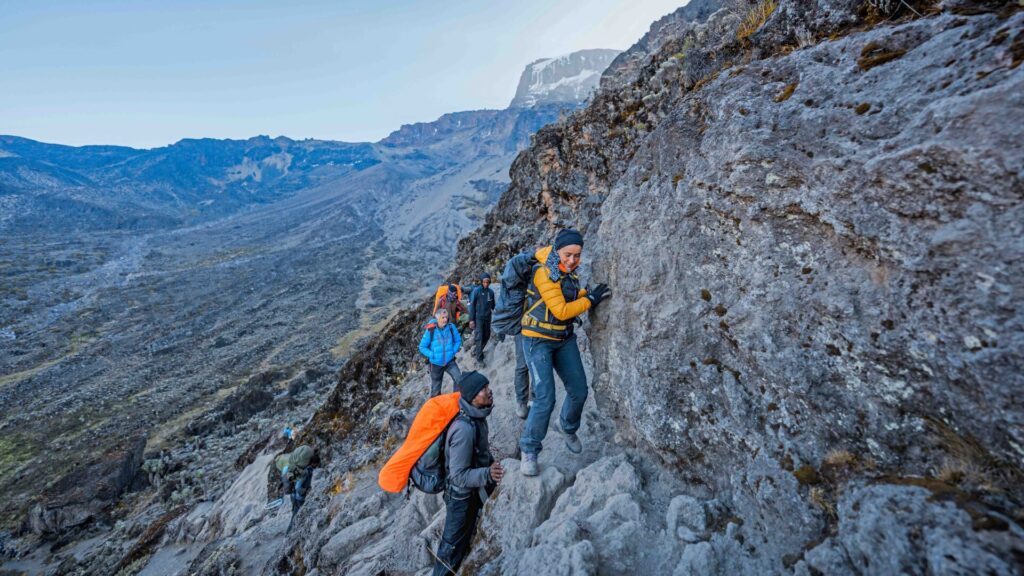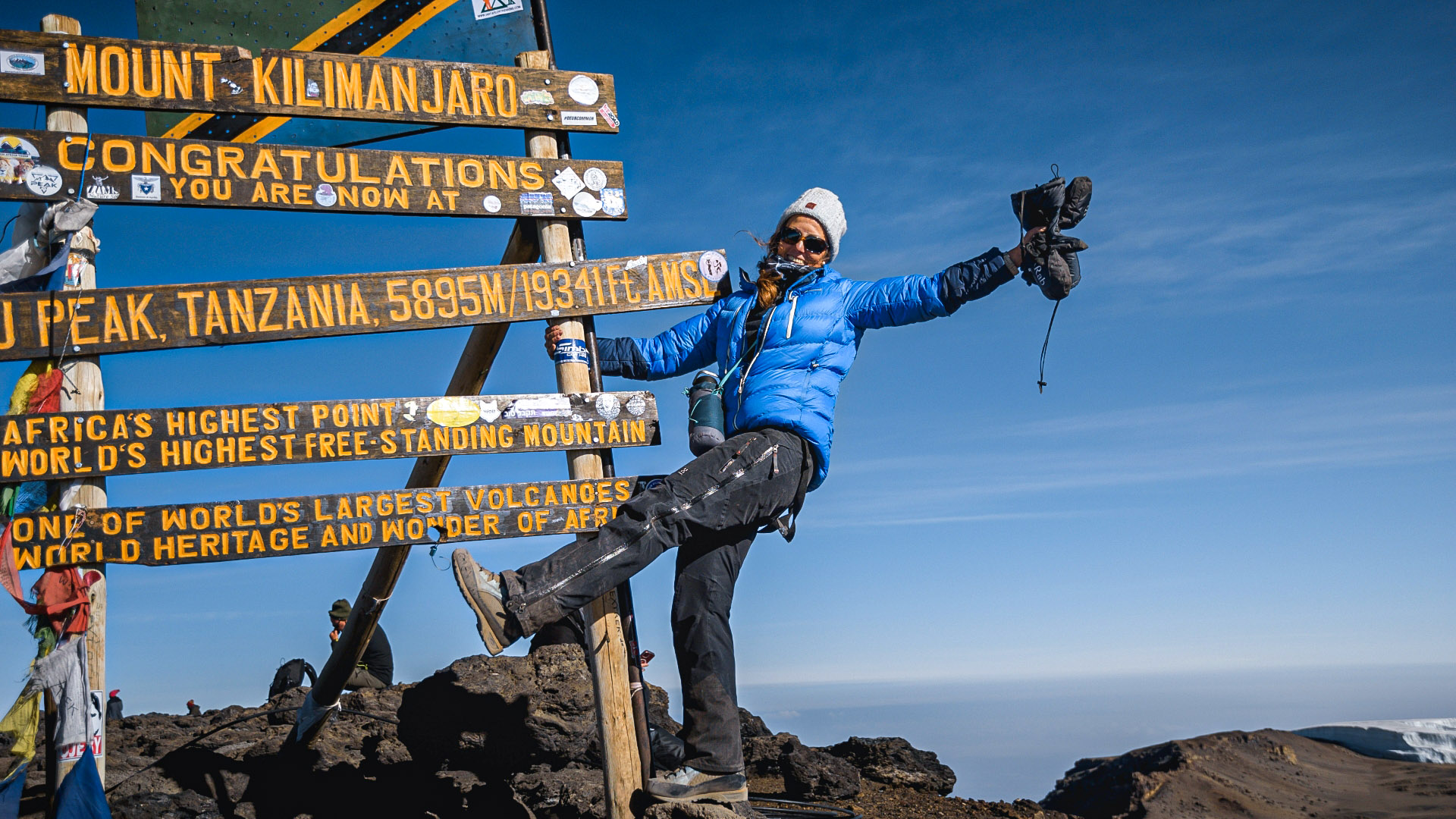Climbing Mount Kilimanjaro, Africa’s tallest mountain and one of the Seven Summits, is a bucket-list adventure for trekkers and nature enthusiasts worldwide. Rising majestically to 5,895 meters (19,341 feet) above sea level, Kilimanjaro offers breathtaking landscapes, diverse ecosystems, and an unforgettable challenge. However, choosing the right route to the summit is essential to ensuring a successful and enjoyable climb. Each route varies in terms of difficulty, scenery, acclimatization profile, and experience. In this guide, we’ll explore the best routes to climb Mount Kilimanjaro, helping you determine which path suits your goals and preferences.
Climbing Routes
Mount Kilimanjaro boasts six main routes, each offering unique experiences and challenges. These routes vary in location, length, and difficulty, catering to diverse preferences and fitness levels. Here’s a quick guide:
1. Marangu Route
Introductory Description: Known as the “Coca-Cola Route,” Marangu is the oldest and most established trail. It is the only route offering hut accommodations, making it a popular choice for budget-conscious climbers.
- Location: Approaches from the southeast.
- Length: 64 kilometers (40 miles), typically completed in 5-6 days.
- Advantages:
- Hut accommodations eliminate the need for camping gear.
- Gradual ascent profile.
- Affordable.
- Disadvantages:
- Lower success rates due to its shorter acclimatization period.
- Crowded during peak seasons.
- Limited scenic variety compared to other routes.
2. Machame Route
Introductory Description: Known as the “Whiskey Route,” Machame is one of the most popular and scenic routes, offering stunning vistas and diverse ecosystems.
- Location: Approaches from the southwest.
- Length: 62 kilometers (38.5 miles), typically completed in 6-7 days.
- Advantages:
- High success rates due to better acclimatization.
- Varied and picturesque landscapes.
- Challenging but rewarding experience.
- Disadvantages:
- Requires camping.
- Steeper trails can be physically demanding.
3. Lemosho Route
Introductory Description: Lemosho is a newer route, celebrated for its remote beauty and high acclimatization success rates.
- Location: Approaches from the western side.
- Length: 70 kilometers (43.5 miles), typically completed in 7-8 days.
- Advantages:
- Stunning and less crowded scenery in the initial stages.
- Excellent for acclimatization due to its gradual ascent.
- Offers a wilderness experience.
- Disadvantages:
- More expensive due to its longer duration.
- Requires camping.
4. Rongai Route
Introductory Description: The Rongai Route is the only trail approaching Kilimanjaro from the north, near the Kenyan border.
- Location: Northern approach.
- Length: 72 kilometers (45 miles), typically completed in 6-7 days.
- Advantages:
- Quieter and less crowded.
- Gradual ascent, suitable for beginners.
- Drier conditions, ideal for the rainy season.
- Disadvantages:
- Less scenic than other routes.
- Limited acclimatization opportunities.
5. Northern Circuit Route
Introductory Description: The Northern Circuit is the newest and longest route, offering a comprehensive Kilimanjaro experience with unparalleled panoramic views.
- Location: Circles the northern slopes.
- Length: 98 kilometers (61 miles), typically completed in 9-10 days.
- Advantages:
- Highest success rate due to ample acclimatization time.
- Uncrowded and serene.
- Diverse and stunning scenery.
- Disadvantages:
- Long duration increases costs.
- Requires camping.
6. Umbwe Route
Introductory Description: The Umbwe Route is the shortest and steepest trail, recommended only for experienced climbers seeking a challenge.
- Location: Approaches from the south.
- Length: 37 kilometers (23 miles), typically completed in 5-7 days.
- Advantages:
- Quickest route to the summit.
- Offers solitude and fewer crowds.
- Disadvantages:
- Low success rates due to rapid altitude gain.
- Extremely physically demanding.

Choosing the Best Route
The “best” route depends on your goals, experience, and preferences. For first-time climbers, Machame and Lemosho are popular due to their scenic beauty and balanced difficulty. For those seeking solitude, Rongai or the Northern Circuit offers a quieter experience. Experienced climbers with limited time might consider Umbwe for its intensity.
Regardless of the route, proper preparation, acclimatization, and guidance from a reputable tour operator are crucial for a successful climb.
In Conclusion
Selecting the best route to climb Mount Kilimanjaro depends on individual fitness, experience, budget, and personal preferences. The Lemosho and Northern Circuit routes offer the highest success rates and best acclimatization, making them ideal for most climbers. However, each route presents unique challenges and rewards.
Regardless of the chosen path, climbing Kilimanjaro requires thorough preparation, physical fitness, proper gear, and mental determination. Consulting with experienced guides and thoroughly researching each route will significantly enhance your chances of reaching the “Roof of Africa.”




